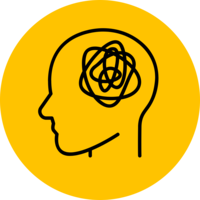Adolescent Health and Development in Context (AHDC)
The AHDC study investigated how adolescents’ daily experiences across different geographic and social environments influence their development, behaviour, and well-being. The study enrolled 1,405 adolescents aged 11 to 17 years, along with their caregivers, from Franklin County, Ohio, United States of America. Participants were recruited between 2014 and 2016 using a combination of vendor- and school-based address lists. Data was collected over one week for each participant and was conducted twice: Wave 1 took place from spring 2014 to summer 2016, and Wave 2 ran from January to December 2016. In both waves, data were gathered through surveys, smartphone-based GPS tracking, and ecological momentary assessments.
Study design
Cohort
Number of participants at first data collection
1,405 (participants)
Age at first data collection
11 - 17 years (participants)
Participant year of birth
Varied (participants)
Participant sex
All
Representative sample at baseline?
Individuals aged 11 to 17 years residing in the Columbus, Ohio, in the United States of America.
Sample features
Country
Year of first data collection
2014
Primary Institutions
Ohio State University
Profile paper DOI
Funders
Eunice Kennedy Shriver National Institute of Child Health and Human Development (NICHD)
National Institute on Drug Abuse (NIDA)
National Institutes of Health (NIH)
National Science Foundation (NSF)
United States Department of Health and Human Services
Ongoing?
No
Data types collected


- Computer, paper or task testing (e.g. cognitive testing, theory of mind doll task, attention computer tasks)
- Physical or biological assessment (e.g. blood, saliva, gait, grip strength, anthropometry)
- Secondary data
- Self-report questionnaire – paper or computer assisted
- None
- None
- Census data
- Geographic, spatial & environmental data
Engagement
Keywords



